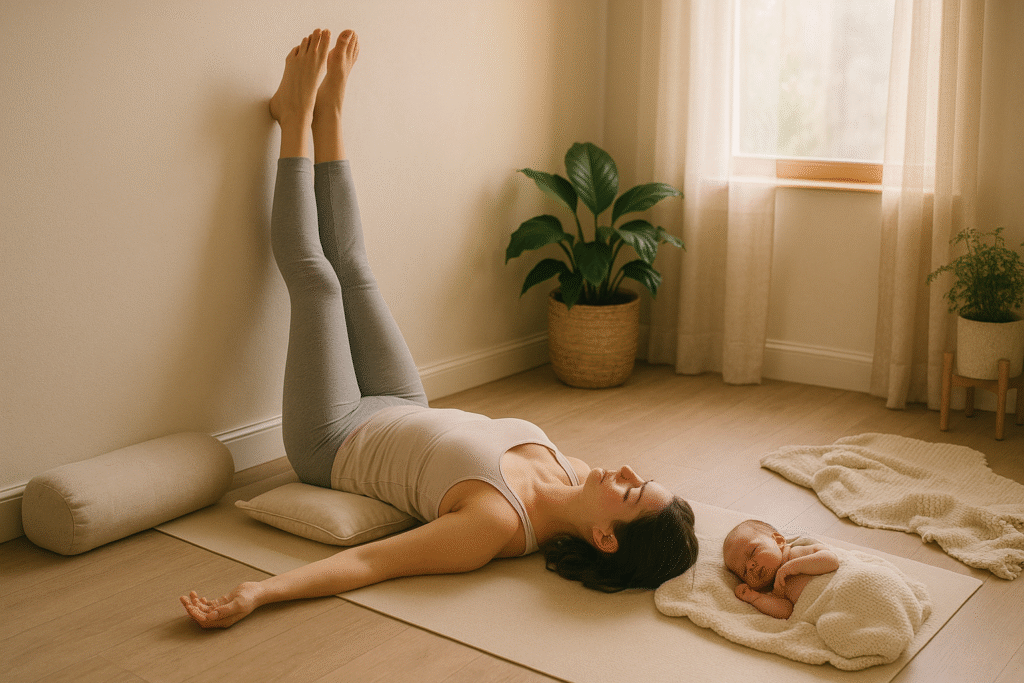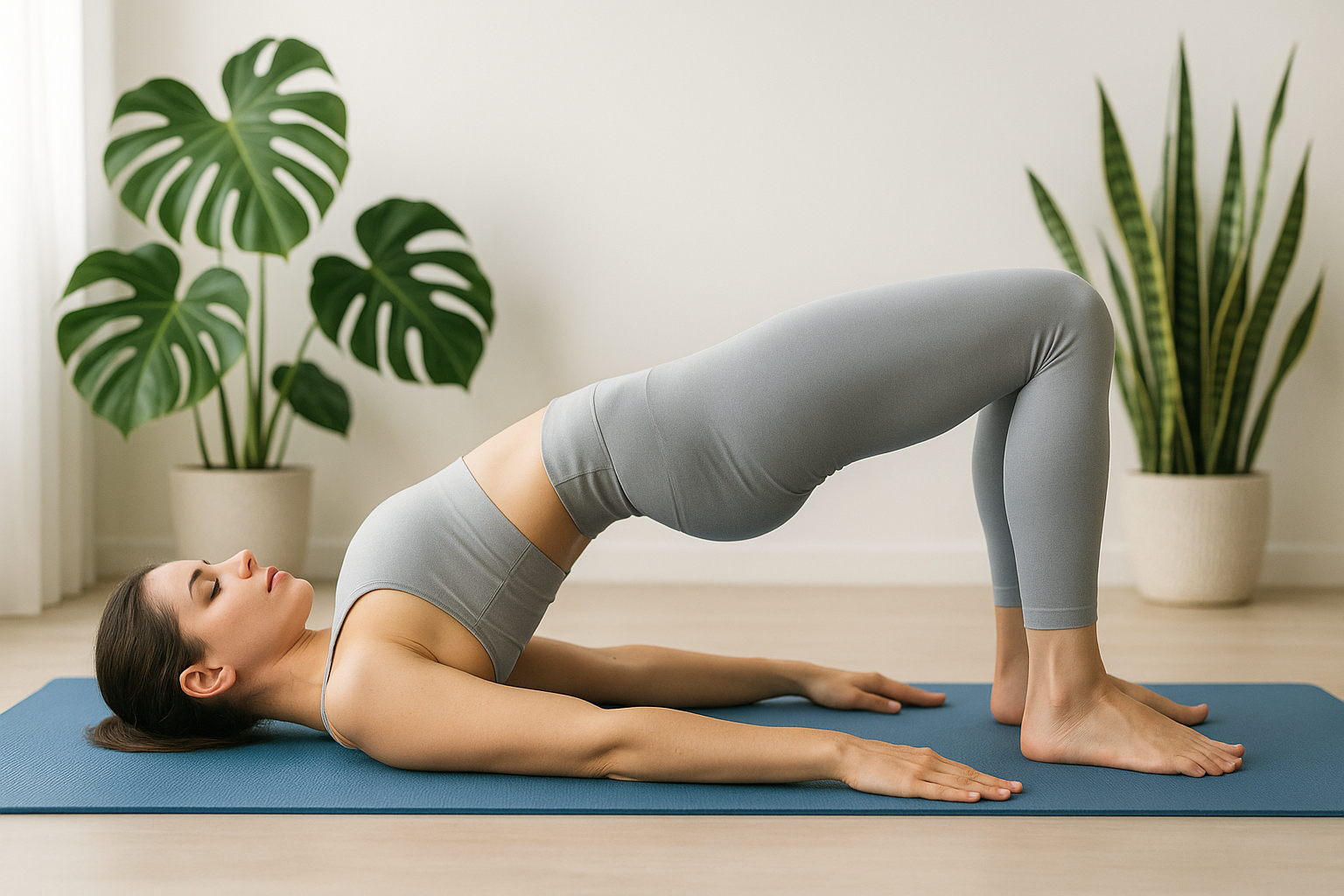9 Pelvic Floor Exercises After Birth That Actually Work
Having a baby is a wild ride, and your body goes through so many changes. One big one people don’t talk about enough is your pelvic floor. It’s super important, especially after birth, whether you had a vaginal delivery or a C-section.
After birth pelvic exercise is a key part of healing, not just for your body, but for your mind, too. Taking care of yourself after bringing a new life into the world is essential. For a complete overview of recovery and overall health, you can explore our guide on pregnancy and postpartum wellness.
As a new mom, it’s easy to focus only on your baby. But your body just did something amazing and needs time to heal. That’s where pelvic floor exercises postpartum come in. This isn’t about getting your “old body” back.
It’s about feeling strong and confident again, and avoiding issues like leaks or pain later on. The good news? With the right post pregnancy pelvic floor exercises, healing is totally possible. This guide is all about giving you the tools to get there.
Key Takeaways
What Happens to the Pelvic Floor After Childbirth?
Think of your pelvic floor as a hammock of muscles holding up all your insides—your bladder, uterus, and bowels. During pregnancy, it’s already working overtime to support your baby’s weight. Then, during delivery, those muscles get stretched big time.
For vaginal birth, they’re stretched to the max. For a C-section, while the muscles don’t go through the same stretching, the abdominal incision can mess with the connection between your core and pelvic synergy. Plus, the pressure of pregnancy itself can cause weakness. This can mess with your bladder and bowel control, and affect pelvic organ support.
Common symptoms of a weak pelvic floor after birth are pretty common. You might have bladder leakage when you sneeze, laugh, or cough. Maybe you feel a sense of heaviness “down there” or have lower back pain. This can be a risk for prolapse prevention. These are all signs your pelvic floor needs some love. Don’t worry, you’re not alone, and healing is a real thing.
When Should You Start Postpartum Pelvic Floor Exercises?

This is a big question, and the answer isn’t a one-size-fits-all thing. How long does it take your pelvic floor to heal after having a baby? It’s a journey, not a race.
- 0-2 Weeks Postpartum: The goal is gentle, gentle, gentle. This is the time for mind-body breathwork to start reconnecting with your body. No heavy lifting, no intense workouts.
- 2-6 Weeks Postpartum: You can start adding in very light, basic moves.
- 6+ Weeks Postpartum: After you get the all-clear from your doctor at your checkup, you can begin more structured routines. This is when to start strengthening your pelvic floor postpartum.
For many, it takes about three to six months to see big improvements, and up to a year or more for a full recovery. Be patient with yourself.
Step-by-Step Guide: Best Pelvic Floor Exercises After Childbirth
You can definitely strengthen your pelvic floor after birth. Here’s a simple breakdown of when to do what, based on expert advice from organizations like ACOG and the NHS.
First Steps: Gentle Exercises for Your First 2 Weeks
This stage is all about mindful movement and breath.
Diaphragmatic Breathing
Lie on your back with your knees bent. Place one hand on your belly. As you breathe in, feel your belly rise. As you breathe out, feel it gently fall. This helps calm your nervous system and starts to reconnect your core and pelvic floor muscles. This is a great gentle pelvic floor recovery exercise.
Pelvic Tilts
While lying on your back, gently rock your hips toward the ceiling, flattening your lower back against the floor. Release. This is a small, slow movement that gets things moving without strain.
Heel Slides
Lie on your back and slowly slide one heel away from your body, then slide it back in. This is a gentle way to engage your core without putting pressure on your new body.
If you’re looking for more gentle ways to get moving, check out our list of the best postpartum yoga poses to heal!
Ready for More? Building Strength from Weeks 2-6
Once you’re feeling a bit better, you can add some classic moves. For parents who want to balance recovery with the realities of raising little ones, our modern parenting guide offers helpful strategies for building routines that support both you and your baby.
Kegels vs reverse Kegels postpartum
The Kegel is the most well-known postnatal pelvic floor exercise. To find the right muscles, imagine you’re trying to stop the flow of urine. Squeeze and lift the muscles of your pelvic floor, hold for a few seconds, and then fully relax. The relaxation (the reverse Kegel) is just as important as the squeeze!
Bridge pose
Lie on your back with knees bent. Squeeze your butt muscles and lift your hips a few inches off the floor. This helps build core and glute strength, which supports your pelvic floor.
Cat-cow
On your hands and knees, gently arch your back like a cat, then drop your belly down, looking up like a cow. This is a great way to improve your posture and body mechanics while caring for baby.
More Than Kegels: Building Functional Strength (6+ Weeks)
Once you have the green light from your doctor or a pelvic floor physical therapist, you can start building more functional strength for everyday life.
Wall squats
Stand with your back against a wall and slide down until your knees are bent at a 90-degree angle (or as far as is comfortable). This helps build lower-body strength and stability.
Clamshells
Lie on your side with knees bent. Keeping your feet together, open your top knee like a clamshell. This works the muscles that support your pelvis and hips.
Advanced Kegels
Once you’ve mastered the basic Kegel, you can try holding for longer or using pelvic training devices like Elvie or simple kegel weights.
Is it Safe to do Pelvic Floor Exercises After C-Section? (Special Considerations)
Yes! In fact, it’s super important. Your body still went through major changes and pressure.
- Modified exercises are key. Listen to your body and avoid anything that hurts your incision.
- Scar massage and breathwork are your best friends. Once your incision is healed, gentle massage can help reduce scar tissue and improve the diastasis recti connection.
- What to avoid early on: No sit-ups or planks. Focus on gentle movements and breathing.
What Happens If You Don’t Do Pelvic Floor Exercises?
Not doing pelvic floor exercise post pregnancy can lead to some long-term issues that are a total bummer.
- Urinary incontinence (leaking) is a big one.
- You could also be at a higher risk for prolapse, which is when your organs shift down. It’s not a fun time and can be really uncomfortable. This is why prolapse prevention is so important.
- Weak pelvic floor muscles can also lead to back and hip instability.
This is all part of the trauma-informed recovery process—being gentle with your body and understanding that healing is complex.
How Long Does It Take to See Results?
Consistency is way more important than intensity. You’ll likely start to notice a difference in a few weeks, but it can take months to truly feel strong again. You might notice less leaking, better bladder control, or less heaviness. Just remember, every small effort counts.
A lot of this depends on postpartum hormone changes and how your body heals. If you’re not seeing results or your symptoms are getting worse, it might be time to see a pelvic floor physical therapist, like those at Mayo Clinic. They are absolute miracle workers and can give you a personalized plan.
How to Fit Pelvic Floor Exercises Into Your Crazy Day? Building a Daily Routine
You don’t need a huge block of time to get this done. Try doing “exercise snacks” throughout the day. You can do some Kegels while you’re feeding the baby, or a few pelvic tilts while you’re waiting for your coffee to brew. A five to ten-minute routine a day is way better than trying to do a one-hour workout once a week.
Getting your posture right while lifting and feeding them is key. For more tips on that, and other things, you can check out our guide on newborn baby care fundamentals.
Beyond Exercises: Lifestyle Tips for Pelvic Health
It’s not all about the exercises. Your lifestyle plays a huge role in your pelvic floor health.
- Hydration & fiber are a big deal. Staying regular prevents straining on the toilet, which puts stress on your pelvic floor.
- Posture while lifting/feeding baby is so important. Use your legs, not your back, to pick them up.
- Your mental health is connected to everything. Deep breathing can help with both. Remember, your health is tied to your baby’s, too. We have a great article on holistic infant development that can give you even more tips.
Conclusion
You gave birth — and that’s incredible! Your body is still healing, so give yourself patience and grace. Every small effort you make, from gentle breathing to pelvic floor exercises postpartum, is meaningful progress.
Strengthening your pelvic floor supports healing, boosts confidence, and helps you feel more like yourself again. Slow and steady wins here, mama — you’ve absolutely got this!
People also ask
When should I start pelvic floor exercises postpartum?
Most experts say to start with gentle breathwork and light movements in the first couple of weeks after birth. You can begin more structured exercises after your 6-week postpartum checkup.
Can you strengthen your pelvic floor after birth?
Yes, absolutely! With consistent post-pregnancy pelvic floor exercises, you can strengthen your pelvic floor and reduce symptoms of weakness.
How long does it take your pelvic floor to heal after having a baby?
While you may see improvements within a few weeks, it can take anywhere from three to six months to see significant strength gains and up to a year for a full recovery.
What are the symptoms of a weak pelvic floor after birth?
Common symptoms include urinary incontinence (leaking), a feeling of heaviness or pressure in the pelvic area, pain during sex, or lower back pain.
What happens if you don’t do pelvic floor exercises after birth?
Skipping these exercises can increase your risk of long-term issues like urinary incontinence, pelvic organ prolapse, and back pain.
How long does it take to strengthen the pelvic floor?
Many women notice a difference in a few weeks, but it can take several months of consistent practice to build significant strength and see lasting results.
How to avoid prolapse after childbirth?
Consistent pelvic floor exercises after childbirth, along with proper lifting techniques and avoiding constipation, are key to preventing prolapse.
Are pelvic floor exercises safe after a C-section?
Yes, they are safe and recommended. Focus on gentle movements and breathing exercises early on, and follow your doctor’s advice on when to start more intense workouts.
What’s the difference between Kegels and reverse Kegels?
A Kegel is a contraction of the pelvic floor muscles. A reverse Kegel is the opposite: a full and complete relaxation or lengthening of those muscles. Both are important for pelvic health.
Can pelvic floor exercises improve sex after birth?
Yes, strengthening the pelvic floor can improve blood flow and muscle control, which may lead to more sensation and pleasure during sex.





